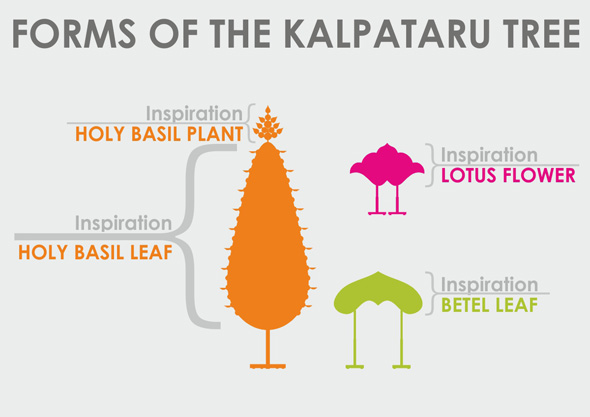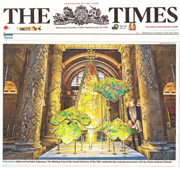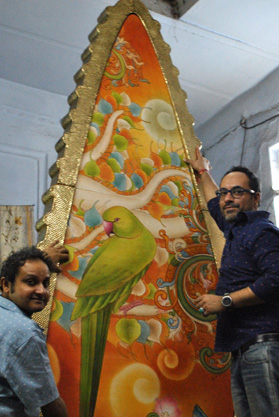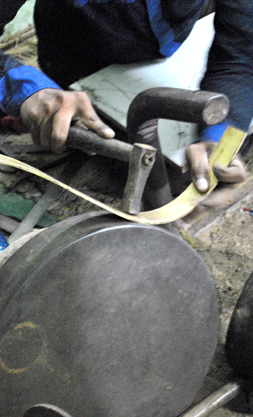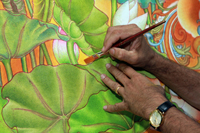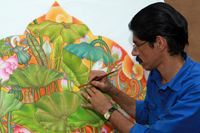Named after a wish-fulfilling divine tree in Hindu mythology, the installation celebrates the concepts and customs associated with the ancient Hindu festival of Diwali, or ‘the festival of lights’.
Kalpataru: The Wishing Tree is made up of an ensemble of free-standing structures in the form of classic Indian motifs such as the lotus petal and the ‘ambi’ or paisley. The metal frames have been handcrafted from brass sheets by a team of expert silversmiths and enhanced with a hand beaten texture popularly seen in traditional utensils used in Indian kitchens. The tallest central motif of the installation reaches three-and-a-half metres tall. Each element is fitted with a vibrant mural motif, hand-painted by artists from the southern state of Kerala in their distinctive mural-painting style. The entire structure is illuminated from below to reveal the intricate patterns of symbolic fruits and leaves. The concepts of nature and culture represented by the mythical ‘tree of life’ are a reflection on some of the customs observed during traditional Diwali celebrations. The tradition of decorating and worshipping the ‘Tulsi’, or holy basil, is a common practice in some Indian homes during the five days of Diwali, which the designers see as a modern-day interpretation of the Kalpataru. They intend the light installation to not only celebrate illumination in its literal sense but also as a metaphor for the celebration of hope, prosperity and ecology.


























